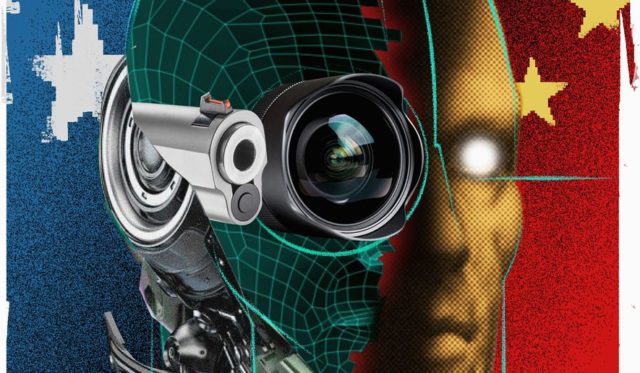The arrest of Harvard Professor Charles Lieber for failing to reveal his work for the Chinese is more than alarming. One of the world’s leading experts in nanotechnology, Mr. Lieber contributed to China’s Thousand Talents Program and assisted China in its military arms race with the United States, whether knowingly or not. Americans should be concerned that China is pursuing military nanotechnology solutions, including linking soldiers’ brains directly to computers.
Since at least 2000, when President Clinton proclaimed his National Nanotechnology Initiative, U.S. government agencies have been heavily engaged in nanotechnology research. A significant part of the work has been funded by the Defense Department, and the long-term goal is to create a new kind of warrior linking the human brain to machines, to millions of sensors and to the computer cloud. If successful, the capability of the human brain would be expanded exponentially. For the warfighter, the complete integration of sensors to shooters and near-perfect situational awareness would create a formidable soldier, and if in the hands of an enemy, a highly dangerous adversary.
The American military, especially since the microelectronics revolution, has based its superiority on technology as a force multiplier, permitting the United States to field smaller but much more lethal forces. China is rapidly catching up with the U.S. military, a source of deep worry in Washington.
As more and more military operations begin to rely on artificial intelligence, a field actively pursued by the Pentagon and by the People’s Liberation Army of China, the line between the warrior and machines starts to blur. Connect the human brain directly to the computers and systems making critical calculation, and the character of the war fighter is forever changed, assuming it is possible.
The Defense Department in 2018 published a major study called “Cyborg Soldier 2050, Human/Machine fusion and the Implications for the Future of the DoD.” The study proclaimed :
“… neural implants for brain–computer interfacing would allow for seamless interaction between individuals and secondary assets (machines). This control could be exerted upon drones, weapon systems, and other remote systems operated by an enhanced individual. The enhancement would not simply entail user control of equipment (brain to machine) but also transmission to operator (machine to brain) and human to human (command and control dynamics) to enhance situational awareness as drone, computational analytical, and human information is relayed to the operator.”
While the Defense Department is aiming at 2050, inventor and futurologist Ray Kurzweil sees the mind-machine interface happening by 2030, where he says the 300 million or so “very general” pattern “recognizers” in the brain can be expanded by creating a synthetic neo-cortex linking the brain to the cloud and merging artificial and human intelligence together. This will be achieved by nano-scale brain implants.
Mr. Lieber and his partners were working on exactly this type of technology and received substantial funding from the Department of Defense and many of its agencies. Mr. Lieber and his colleagues were awarded a number of patents, but the most important one appears to be a 2015 patent award called “Systems and Methods for [nano-scale] Injectable Devices.” The idea of the 2015 patent was to inject a nano-scale matrix into the brain and creating a brain interface that could be linked to machines.
Research for this patent was funded by the Defense Department and the National Institutes of Health. The government has certain rights to the invention, according to the patent application.
Mr. Lieber has been accused by the U.S. government of concealing information about the work he was doing in China. In 2015, Mr. Lieber was elected as a foreign member of the Chinese Academy of Sciences.
In 2015, the same year that Mr. Lieber was awarded a patent enabling nanotechnology implants for the human brain, Pentagon officials sounded the alarm about China working on their own cyborg project. Then-Deputy Defense Secretary Robert Work said: “Now our adversaries, quite frankly, are pursuing enhanced human operations, and it scares the crap out of us.”
Cyborg technology is also being commercialized. Elon Musk’s company Neuralink is now entering the animal-testing phase and states that it will start experiments on humans in 2020. Mr. Lieber is one of the consulting scientists at Neuralink. Mr. Musk has invested $100 million of his money in this startup and is raising additional funds.
Whether 2050 or 2030 or in the next few years the first Cyborg Warrior may actually appear. Will it be an American Cyborg or from China? No one knows.


